We hebben een lijst met de belangrijkste vragen en antwoorden voor basisonderhoud. De volgende regels zijn essentieel zodat de e-bike je zo lang mogelijk van dienst kan zijn en je optimaal van de rit kunt genieten.
Hoe zorg je goed voor je e-bike?
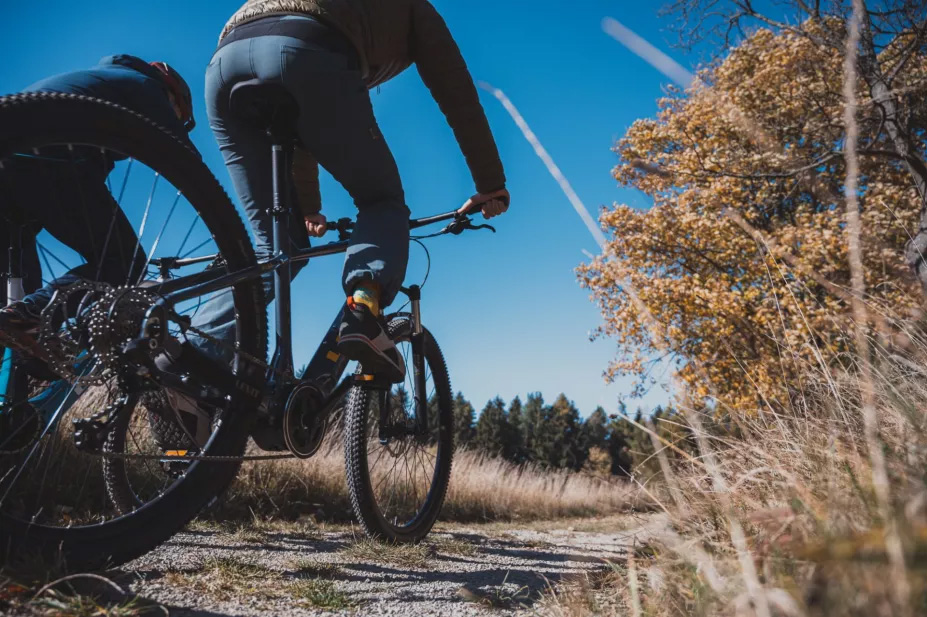
Als je net eigenaar bent geworden van je eerste e-bike, of als je hem al een tijdje in je bezit hebt, maar nog steeds niet weet hoe je er goed voor moet zorgen en hem moet onderhouden, hebben we een lijst met de belangrijkste vragen en antwoorden met betrekking tot basiszorg en -onderhoud. De volgende regels zijn van essentieel belang voor een lang en goed onderhoud van je e-bike, zodat je er optimaal van kunt genieten. Het onderhoud van e-bikes lijkt erg op dat van gewone fietsen; het belangrijkste verschil is het juiste onderhoud en gebruik van de elektromotor en de accu. Als je wilt weten wat de voordelen van e-bikes zijn en waarom het goed is om een e-bike aan te schaffen, lees dan de De e-bike is niet alleen voor ouderen!
E-bike service en onderhoud:
Hoe ver kan ik komen op een e-bike?
De actieradius van een e-bike kan nooit precies worden bepaald omdat deze altijd afhankelijk is van verschillende factoren, zoals het gewicht van de berijder, het ritprofiel, de mate waarin de motor wordt gebruikt, de temperatuur, de technische staat van de e-bike en vele andere. Desalniettemin is het aan te raden om altijd terug te gaan met minimaal de resterende accucapaciteit en de oplader mee te nemen als u een langere tocht plant of niet zeker weet wanneer u uw bestemming bereikt.
Wat moet je doen voor de eerste rit?
Een algemeen advies zou zijn om de staat van de hele fiets te controleren: controleer op speling van individuele onderdelen op de fiets en controleer vooral of het remsysteem goed werkt, d.w.z. of de remmen correct werken. Daarnaast moet ook de status van de accu worden gecontroleerd; als de accu voldoende capaciteit heeft voor de reis die je van plan bent te maken, ben je meteen klaar om te gaan. Als je denkt dat de resterende capaciteit van de accu misschien niet voldoende is, laad de accu dan op tot de capaciteit die je wilt en ga op weg. De accu hoeft niet voor elke rit volledig opgeladen te zijn. De batterij kan worden opgeladen met elke resterende capaciteit en het opladen heeft geen enkele invloed op de levensduur.
Wat als mijn e-bike tijdens de rit wordt uitgeschakeld?
Wanneer de e-bike tijdens een rit uitschakelt, wordt dit vaak veroorzaakt doordat de berijder langere tijd zonder ondersteuning heeft gereden. De regeleenheid interpreteert dit als het niet gebruiken van de e-bike en schakelt zichzelf uit. Dit gebeurt na ongeveer 30 minuten zonder ondersteuning. Schakel de ondersteuning in ieder geval even in om dit te voorkomen. Een lege accu kan een andere reden zijn dat de e-bike zichzelf uitschakelt: als de accu nog meer dan 10% capaciteit heeft, schakel dan de ondersteuning in en rijd verder met het basis ondersteuningsniveau. Als de e-bike zichzelf uitschakelt, schakel deze dan niet opnieuw in en rijd de rest van de rit zonder ondersteuning.
Kan ik op e-bikes rijden in de regen?
E-bikes zijn ontworpen om spatwater te weerstaan, dus rijden in regenachtig weer kan geen kwaad. Regelmatig of langdurig rijden in de regen wordt echter afgeraden. Bij terugkomst raden we u aan de accu uit uw e-bike te halen en zowel de e-bike als de accu op natuurlijke wijze te laten drogen.
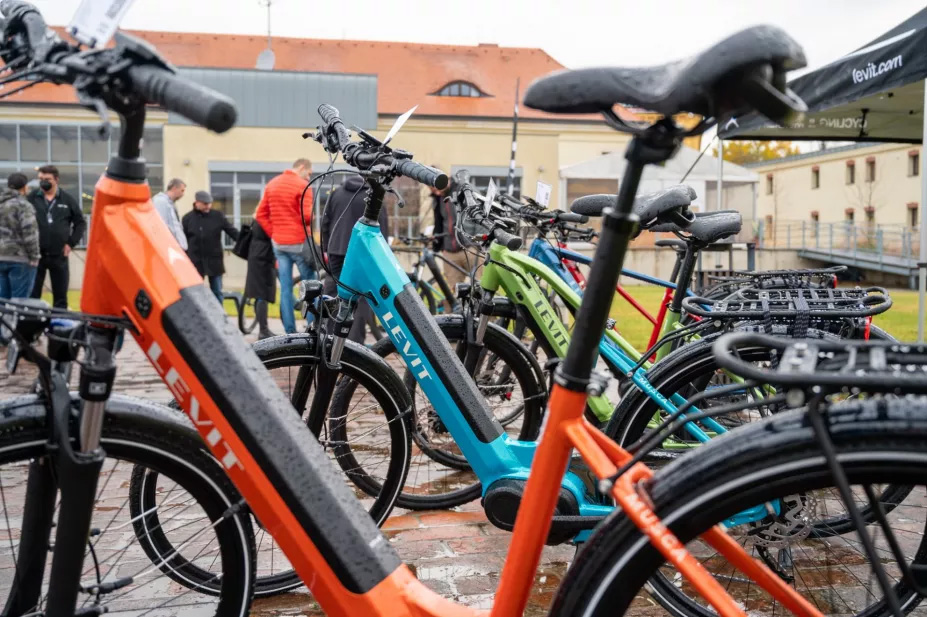
Hoe moet ik mijn e-bike wassen?
Wij raden u aan de accu niet te verwijderen en deze en het gebied eromheen schoon te maken met een vochtige doek.Uw e-bike kan worden schoongemaakt met speciale schoonmaakmiddelen waarvoor geen water nodig is. Wij raden u aan deze te gebruiken. Als u dergelijke reinigingsmiddelen niet kunt gebruiken, kunt u het beste een spons gebruiken om auto's schoon te maken. Het reinigen van de e-bike met water onder druk wordt NIET aanbevolen! Nadat de e-bike is schoongemaakt, is het raadzaam om alle onderdelen van de e-bike die gesmeerd moeten worden te smeren. Meer informatie vindt u in het hoofdstuk over het smeren van de ketting.
Kan ik op e-bikes rijden als het buiten vriest?
Ja! U moet er rekening mee houden dat, net als bij elk ander apparaat dat op batterijen werkt, de lage temperatuur kan leiden tot een verminderde actieradius van uw e-bike.Dit komt door de chemische reactie van de accucellen op de lage temperatuur. Mocht het gebeuren dat de accu bevriest, dan kan de e-bike stoppen met functioneren. Wanneer de accu echter weer voldoende is opgewarmd om op bedrijfstemperatuur te komen, kan de e-bike weer worden gebruikt.
Wanneer is het juiste moment om mijn e-bike voor het eerst te laten onderhouden?
De garantiecontrole is de eerste keer dat u uw e-bike naar een servicebeurt brengt. De garantiecontrole moet worden uitgevoerd nadat u 100-200 kilometer op uw e-bike hebt gereden, maar uiterlijk 1 jaar nadat u de e-bike hebt gekocht. Omdat uw e-bike vers van de lopende band komt, worden veel onderdelen voor het eerst blootgesteld aan belasting en zo ontstaat speling. Het doel van de garantieperiode is ervoor te zorgen dat een vakkundige monteur de hele fiets controleert en alle spelingen en onderdelen zo instelt dat u veilig op de e-bike kunt rijden. Wij raden u aan om aantekeningen over uw fiets te maken voordat u uw fiets meeneemt voor een garantiecontrole en vervolgens met de monteur te overleggen over uw aantekeningen. De garantiecontrole wordt altijd uitgevoerd bij de dealer/service waar u uw e-bike oorspronkelijk heeft gekocht.
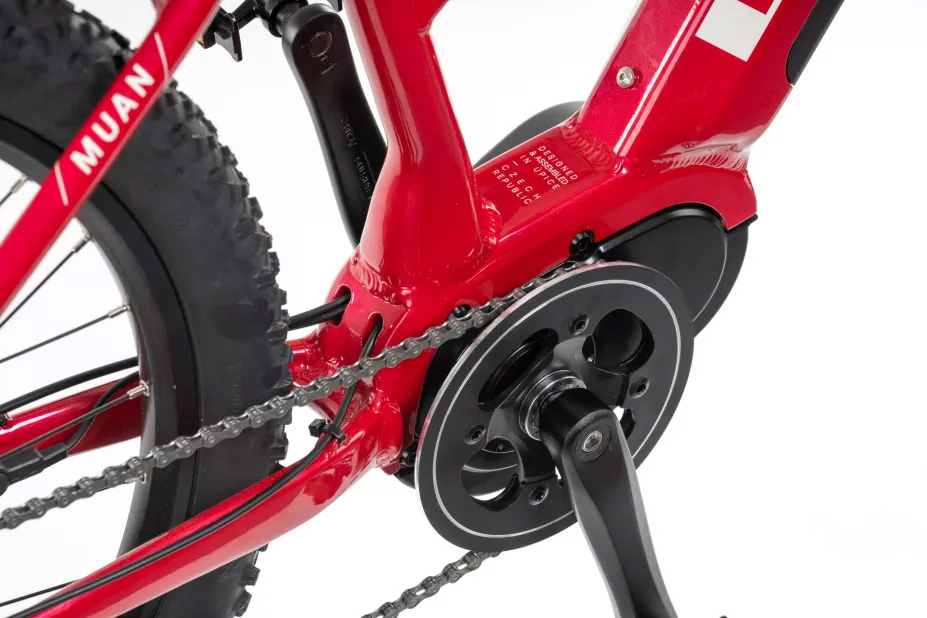
Wat voor onderhoud is er nodig voor de motor?
E-bike motoren vereisen geen bijzondere zorg op voorwaarde dat de e-bike is aangeboden voor een garantiecontrole. Tijdens de garantiecontrole controleert de monteur of de centrale motor goed is bevestigd aan het frame van de fiets, aan de achtervork van het frame in het geval van een naafmotor. Nadat je 7.000 - 10.000 km hebt gereden, is het aan te raden om de motor bij te vullen met smeermiddel. Dit zorgt voor een stille werking van de motor en een zo laag mogelijk energieverbruik.
Hoe weet ik dat mijn e-bike een servicebeurt nodig heeft?
Wat betreft e-bikes met een centrale motor is het aan te raden om de e-bike te laten nakijken nadat je er 800 - 1.000 kilometer op hebt gereden, tenzij je eerder een probleem opmerkt. Aangezien de ondersteuningskrachten van de motor via de ketting op het achterwiel worden overgebracht en de ketting wordt blootgesteld aan trekkrachten van zowel jou als de motor, is het noodzakelijk om de ketting op zijn minst te controleren en mogelijk te vervangen door een nieuwe. Bij fietsen met een naafmotor worden de ondersteunende krachten direct op het wiel overgebracht, waardoor het niet nodig is om je e-bike zo vaak te laten controleren. Een voorzichtig bezoek aan een fietsservice kan nooit kwaad. In het algemeen geldt dat als je twijfelt over de technische staat van je e-bike, het een goed idee is om een bezoek te brengen aan de fietsenmaker. Zo weet je zeker dat je e-bike in goede staat blijft en dat je er veilig en comfortabel op kunt fietsen. Je kunt je e-bike bij elk van onze dealers laten onderhouden.
Hoe moet ik de ketting smeren?
Er zijn speciale oplossingen voor e-bike kettingen op de markt, die ingrediënten bevatten die het geschikt maken voor gebruik met e-bikes. We raden aan deze te gebruiken, maar het is ook mogelijk om smeermiddelen voor kettingen van gewone fietsen te gebruiken. Het gebruik van een druppelaar is de handigste manier om kettingen te smeren (spray wordt veel te veel verspreid en kan op de rem terechtkomen, waardoor de rem zijn efficiëntie verliest). Maak de ketting eerst schoon van vuil en smeer altijd de delen die het tandwiel raken. Laat het smeermiddel 15 minuten intrekken en veeg het overtollige smeermiddel met een doek van de ketting. Herhaal dit na maximaal 200 km te hebben gereden, na rijden in de regen of na het wassen van je e-bike.
Hoe weet ik wanneer het tijd is om de ketting te vervangen?
Met een kettingmeter kun je bepalen of de ketting aan vervanging toe is. De kettingmeter is te koop in elke winkel met fietsen, of je kunt je ketting laten opmeten in elk fietsservicepunt. Als de ketting te lang is, moet hij worden vervangen. Over het algemeen moet hij worden vervangen nadat er 800 tot 1.200 kilometer mee is gereden. De periode hangt echter af van hoe veeleisend de ritten zijn die u het vaakst maakt op uw e-bike. Hoe meer je de kracht van de motor gebruikt, hoe vaker het nodig zal zijn om de ketting te vervangen.
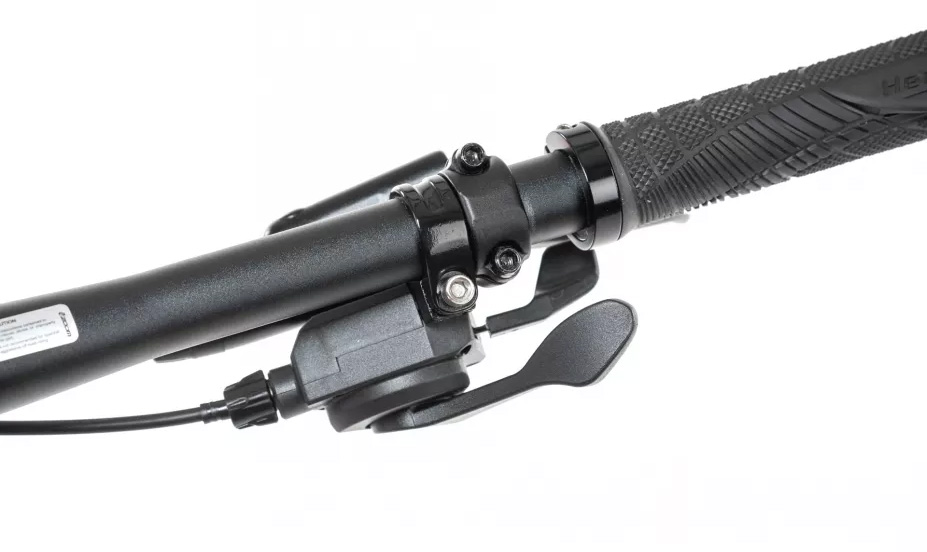
Hoe schakel je correct op een e-bike?
Schakelen op een e-bike gebeurt op dezelfde manier als op een gewone fiets. De kracht van de motor en het energieverbruik zijn dan veel efficiënter. Tegelijkertijd betekent dit dat er geen enkel tandwiel in de cassette slijt (wat wel gebeurt als de gebruiker van ondersteuningsniveau wisselt in plaats van versnelling. Dergelijke slijtage valt niet onder de garantie). Schakel zodanig dat je de ideale kracht kunt uitoefenen en trap met een cadans die voor jou comfortabel is. Het is altijd beter om sneller te trappen dan om teveel kracht te gebruiken. Als je trapfrequentie laag is, gebruik je veel kracht en geeft de motor je een groter vermogen. Dit vertaalt zich in een groter energieverbruik en de overdracht van elektrische energie naar beweging is niet zo efficiënt. Als je wilt genieten van een grotere actieradius tijdens je tochten, raden we je aan om sneller te trappen en minder kracht te gebruiken.
Hoe moet ik gebruik maken van de ondersteuningsstanden?
We raden aan om alleen van ondersteuningsstand te wisselen als je versnellingen “op” zijn of als je niet teveel snelheid wilt verliezen bij het bergop rijden.
Hoe rem je correct op een e-bike?
Het beste zou zijn om met beide remmen gelijkmatig te remmen. Je remmen raken dan niet oververhit (vooral bij lange afdalingen), hun efficiëntie blijft gelijk en de slijtage is lager. Vergeet niet dat de e-bike zwaarder en sneller is dan de gewone fiets en dat het noodzakelijk is om efficiënt te remmen. Het is net zo belangrijk om het onderhoud van je remmen niet te verwaarlozen.
Wat voor onderhoud is er nodig voor hydraulische schijfremmen?
Schijfremmen vereisen geen speciaal onderhoud van de gebruiker. Denk er altijd aan dat remschijven nooit in contact mogen komen met olie en vet. Het is raadzaam om het onderhoud van je remmen over te laten aan een vakbekwame monteur of serviceplaats. Het hydraulische remsysteem bevat geen kabels - als je je hydraulische remmen moet afstellen, breng je je e-bike naar een servicepunt.
Hoe kan ik zien dat mijn remmen aan onderhoud toe zijn?
De monteur moet je op tijd laten weten dat de remblokjes moeten worden vervangen (of ander noodzakelijk onderhoud, zoals het ontluchten van je remmen). Als je e-bike lange tijd niet is gecontroleerd en je vermoedt dat je remmen niet in perfecte staat zijn, laat je e-bike dan onmiddellijk nakijken. U kunt zien dat uw remmen niet in orde zijn door bijvoorbeeld een ongebruikelijk geluid tijdens het remmen of doordat de reactie van de remhendel anders aanvoelt wanneer deze wordt ingedrukt. Als de remhendel het stuur raakt nadat u deze met normale kracht hebt ingedrukt en de rem niet krachtig wordt aangetrokken, moet u uw e-bike onmiddellijk laten nakijken.
Accu van e-bikes onderhouden
De accu is een van de belangrijkste en duurste onderdelen van e-bikes en de juiste verzorging ervan zou een essentiële stap van het eigenlijke onderhoud moeten zijn. De volgende vragen en antwoorden vertellen je hoe je voor de accu moet zorgen om een lange levensduur te garanderen.

Is het nodig om de accu op te laden en leeg te maken voordat de e-bike wordt gebruikt?
Nee, dat is niet nodig. Dit werd in het verleden gebruikt met accu's die waren uitgerust met oudere celtechnologie en het doel van deze actie was om het zogenaamde “geheugeneffect” te minimaliseren. Tegenwoordig wordt echter Li-Ion-technologie gebruikt en die heeft deze eigenschap niet. Integendeel: we raden je aan deze methode NIET te gebruiken als je wilt dat je batterij lang meegaat.
Hoe moet ik de batterij opladen?
De batterij wordt opgeladen nadat de oplader in de oplaadconnector en vervolgens in het stopcontact is gestoken. De accucapaciteit hoeft niet per se 100% te zijn voor elke rit, maar we raden aan dat je altijd naar huis gaat met een accu die niet leeg is (met een capaciteit van minstens 10%). Het beste idee is om de accucapaciteit tussen 20-80% van de volledige capaciteit te houden.
Wat kan ik doen om ervoor te zorgen dat mijn accu zo lang mogelijk meegaat?
Rijd allereerst zo vaak mogelijk op uw e-bike. Als u wilt dat uw accu echt lang meegaat, moet deze zo vaak mogelijk leeg raken en worden opgeladen. Tegelijkertijd moet u de volgende regel in gedachten houden: houd uw accu op 20 - 80% van zijn capaciteit.
Hoe lang duurt het om de batterij op te laden?
In het algemeen duurt het ongeveer 5 uur om de batterij op te laden. De oplaadtijd is afhankelijk van de accucapaciteit en van de stroomsterkte van je oplader. Als uw e-bike wordt geleverd met een 16Ah accu en een lader die werkt met 3A stroom, zal de tijd die nodig is om uw accu op te laden iets meer dan 5 uur zijn. Het is goed om te onthouden dat opladen niet lineair is: hoe “voller” de accu is, hoe meer tijd er nodig is om de accu op te laden. In de praktijk betekent dit dat het opladen van een batterij van 20% van de capaciteit tot 60% minder tijd kost dan het opladen van een batterij met 80% van de capaciteit tot 100%. Als je batterij leeg is (0% van de capaciteit), raden we af om deze in één keer op te laden tot 100%. Het is raadzaam om een pauze in te lassen zodat de accu kan afkoelen.
Wat als de accu helemaal leeg raakt?
Als de accu helemaal leeg is (d.w.z. de e-bike kan niet meer worden ingeschakeld), laadt u de accu op tot 50% van de volledige capaciteit en laat u de accu vervolgens afkoelen. Laad de accu na ongeveer een uur op tot 80-100% van de capaciteit.
Wat als de capaciteit van mijn accu tijdens de rit leeg raakt?
Probeer eerst om uw e-bike weer aan te zetten. Als de accucapaciteit meer dan 10% is, kunt u uw rit voortzetten met het basis ondersteuningsniveau. Als uw e-bike zichzelf weer uitschakelt, schakel hem dan niet in en rijd de rest van uw rit zonder ondersteuning. Als je voor vertrek weet dat je een zware of lange tocht gaat maken, neem dan de oplader mee. Hij neemt niet veel ruimte in beslag in je rugzak en een stopcontact vind je in principe overal. Dan is het raadzaam om er rekening mee te houden dat een lege (0%) accu in ongeveer 1,5 uur 50% van zijn volledige capaciteit bereikt (deze informatie is afhankelijk van het type oplader, de capaciteit van de accu en de technische staat van je accu).
Hoe vaak moet ik de accu opladen?
De accu moet worden opgeladen, afhankelijk van de huidige capaciteit en ook op basis van de eisen van de reis die je van plan bent te maken. De accu hoeft niet op volle capaciteit (100%) te zijn en als je niet zeker weet wanneer je terugkomt, neem dan de oplader mee. Laat de batterij niet aangesloten op de lader als deze volledig is opgeladen: hierdoor slijt de batterij en wordt de levensduur korter.
Vergt de batterij speciaal onderhoud?
Houd er vooral rekening mee dat de batterij niet gedurende langere tijd leeg mag zijn, omdat dit de batterij kan beschadigen. Bewaar de batterij in een droge omgeving en stel deze niet bloot aan kou. Als de batterij vochtig lijkt, laat deze dan op natuurlijke wijze drogen in een droge ruimte met kamertemperatuur. Als de batterij langere tijd aan lage temperaturen is blootgesteld, laat deze dan op natuurlijke wijze opwarmen tot de bedrijfstemperatuur. Daarnaast raden wij u aan hetzelfde onderhoud uit te voeren als bij een gewone fiets.
Hoe moet ik de batterij in de winter onderhouden?
De batterij moet worden opgeslagen op een droge plaats met een temperatuur van ten minste 15 °C; kamertemperatuur is echter de beste optie. De accu moet 50-60% van zijn capaciteit behouden. Het is voldoende om de capaciteit elke maand of twee te controleren en de batterij op te laden als je merkt dat de capaciteit aanzienlijk is gedaald. Als de capaciteit van de batterij gelijk blijft, betekent dit dat deze in goede staat is. Dus als je besluit om weer op je e-bike te gaan rijden, hoef je alleen maar de accu op te laden tot de capaciteit die je nodig hebt en je kunt gaan! Natuurlijk is het ook nodig om alle mechanische onderdelen en componenten van je e-bike te controleren, de werking van de remmen en het schakelen, de bandenspanning, de staat van de banden, enz. En natuurlijk de ketting smeren!
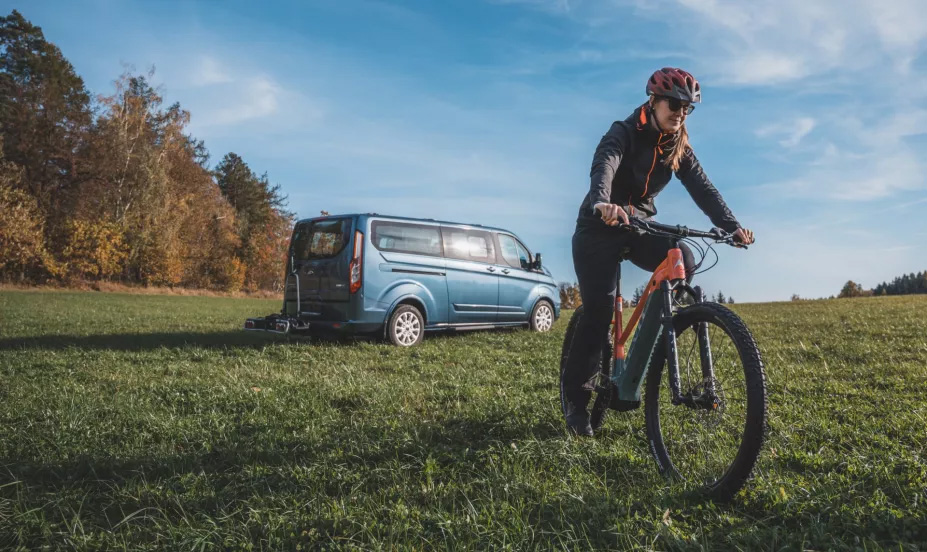
Als je goed zorgt voor je e-bike en de essentiële onderdelen ervan, word je beloond met een probleemloze en soepele werking en een lange levensduur. Als je twijfels hebt over het onderhoud en de verzorging van je e-bike, ga dan naar het dichtstbijzijnde servicepunt en vraag om advies. Het oude gezegde gaat nog steeds op: “Je hoeft je niet te schamen als je het niet weet”.
